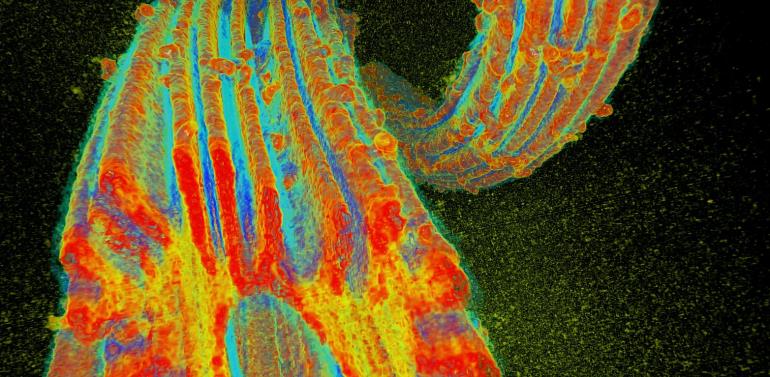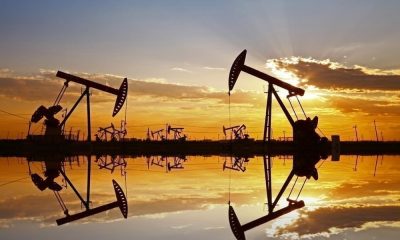International
Advances in extracting uranium from seawater announced

“Understanding how the adsorbents perform under natural seawater conditions is critical to reliably assessing how well the uranium adsorbent materials work,” Gill said. “In addition to marine testing, we assessed how well the adsorbent attracted uranium versus other elements, adsorbent durability, whether buildup of marine organisms might impact adsorbent capacity, and we demonstrated that most of the adsorbent materials are not toxic. PNNL also performed experiments to optimize release of uranium from the adsorbents and adsorbent re-use using acid and bicarbonate solutions.”
Marine testing at PNNL showed an ORNL adsorbent material had the capacity to hold 5.2 grams of uranium per kilogram of adsorbent in 49 days of natural seawater exposure — the crowning result presented in the special issue. The Uranium from Seawater program continues to make significant advancements, producing adsorbents with even higher capacities for grabbing uranium. Recent testing exceeded 6 grams of uranium per kilogram of adsorbent after 56 days in natural seawater — an adsorbent capacity that is 15 percent higher than the results highlighted in the special edition.
The special issue captures a wide range of enterprises, including:
Uranium coordination and computer-aided ligand design (ORNL)
Thermodynamic, kinetic and structural characterization of the adsorbent (Lawrence Berkeley National Laboratory, ORNL, PNNL)
Adsorbent synthesis using radiation to graft more polymer onto the polyethylene (ORNL, Brookhaven National Laboratory, University of Maryland)
Adsorbent synthesis using a chemical method (ORNL, University of Tennessee)
Adsorbent nanosynthesis (ORNL, PNNL, Hunter College, University of Chicago, University of South Florida, SLAC National Accelerator Laboratory, University of California-Berkeley)
Laboratory testing and modeling of adsorbent performance (ORNL, Georgia Tech)
Marine testing and performance assessment of the adsorbent (PNNL, Woods Hole Oceanographic Institution, University of Miami)
Adsorbent durability and reusability (PNNL, University of Idaho)
Adsorbent characterization, toxicity and biofouling studies (ORNL, PNNL, UI)
Technology cost analyses and modeling (University of Texas-Austin)
Green chemistry: Adsorbents prepared using marine shellfish waste (University of Alabama)
Adsorbent deployment (PNNL, ORNL, MIT)
Uranium from terrestrial sources can last for approximately 100 years, according to Erich Schneider of the University of Texas-Austin. As terrestrial uranium becomes depleted, prices are likely to rise. “If we have technology to capture uranium from seawater, we can ensure that an essentially unlimited supply of the element becomes available if uranium prices go up in the future,” Schneider said.
In July, experts in uranium extraction from seawater will convene at University of Maryland-College Park for the International Conference on Seawater Uranium Recovery. They will further explore the potential of uranium from seawater to keep the world’s lights on.
-

 Alamaliktistaad Magazines2 months ago
Alamaliktistaad Magazines2 months agoAlam Al Iktisaad – September 2025 Edition
-

 Magazines2 months ago
Magazines2 months agoOER – September 2025 Issue
-

 News2 months ago
News2 months agoKitchenomiKs Secures Investment of US$3.2M Led by Jasoor Ventures
-

 News2 months ago
News2 months agoOman Inaugurates ‘Hadatha’ – Its All-New Cybersecurity Center
-

 Banking & Finance2 months ago
Banking & Finance2 months agoOman Arab Bank Highlights Its Ongoing Strategic Initiatives and Future Plans
-

 News2 months ago
News2 months agoIEA Expects Global Oil Market to Remain Oversupplied in 2026
-

 Energy2 months ago
Energy2 months agoWLGA Middle East LPG Summit & Expo 2025 to be held at OCEC on November 10 and 11
-

 Real Estate2 months ago
Real Estate2 months agoAl Mouj Muscat Unveils Azura Beach Residences Phase 2: A New Chapter in Waterfront Living































You must be logged in to post a comment Login